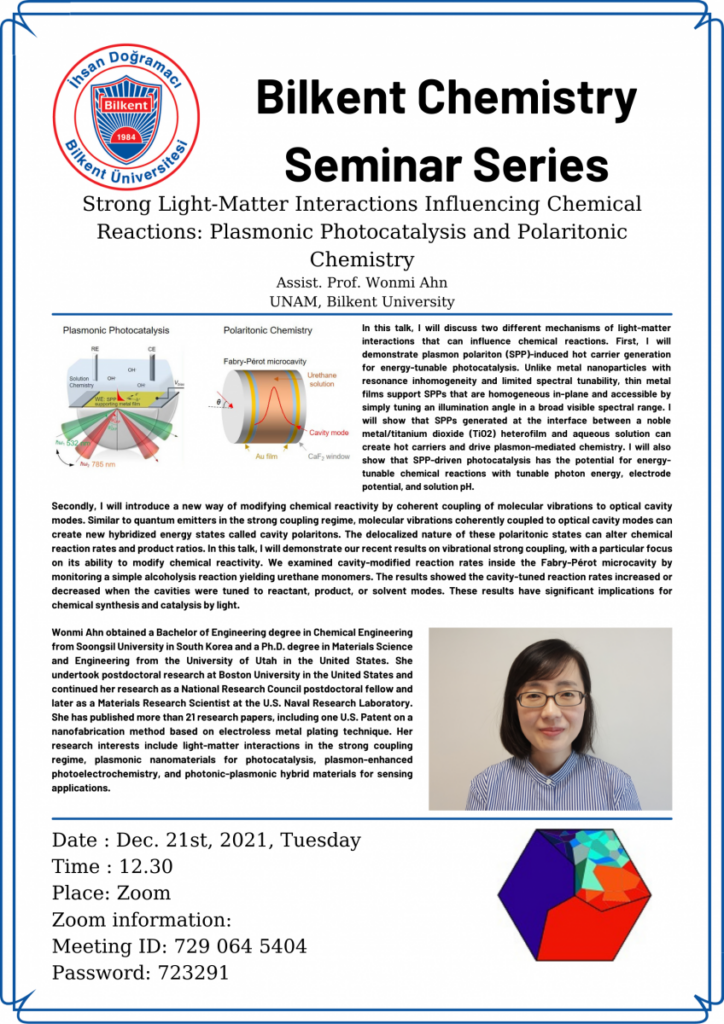Fall '21 Department Seminars with Dr. Wonmi Ahn
Title: Strong Light-Matter Interactions Influencing Chemical Reactions: Plasmonic Photocatalysis and Polaritonic Chemistry
Speaker: Dr. Wonmi Ahn
Insitute of Materials Science and Nanotechnology, Bilkent University
Ankara, Türkiye
Date: December 21, 2021, Tuesday
Time: 12:30
Place: Zoom

Abstract:
In this talk, I will discuss two different mechanisms of light-matter interactions that can influence chemical reactions. First, I will demonstrate plasmon polariton (SPP)-induced hot carrier generation for energy-tunable photocatalysis. Unlike metal nanoparticles with resonance inhomogeneity and limited spectral tunability, thin metal films support SPPs that are homogeneous in-plane and accessible by simply tuning an illumination angle in a broad visible spectral range. I will show that SPPs generated at the interface between a noble Cavity mode metal/titanium dioxide (Ti02) heterofilm and aqueous solution can create hot carriers and drive plasmon-mediated chemistry. I will also CaF, window show that SPP-driven photocatalysis has the potential for energy- tunable chemical reactions with tunable photon energy, electrode potential, and solution pH.
Secondly, I will introduce a new way of modifying chemical reactivity by coherent coupling of molecular vibrations to optical cavity modes. Similar to quantum emitters in the strong coupling regime, molecular vibrations coherently coupled to optical cavity modes can create new hybridized energy states called cavity polaritons. The delocalized nature of these polaritonic states can alter chemical reaction rates and product ratios. In this talk, I will demonstrate our recent results on vibrational strong coupling, with a particular focus on its ability to modify chemical reactivity. We examined cavity-modified reaction rates inside the Fabry-Pérot microcavity by monitoring a simple alcoholysis reaction yielding urethane monomers. The results showed the cavity-tuned reaction rates increased or decreased when the cavities were tuned to reactant, product, or solvent modes. These results have significant implications for chemical synthesis and catalysis by light.
Short Biography of the Speaker:
Wonmi Ahn obtained a Bachelor of Engineering degree in Chemical Engineering from Soongsil University in South Korea and a Ph.D. degree in Materials Science and Engineering from the University of Utah in the United States. She undertook postdoctoral research at Boston University in the United States and continued her research as a National Research Council postdoctoral fellow and later as a Materials Research Scientist at the U.S. Naval Research Laboratory. She has published more than 21 research papers, including one U.S. Patent on a nanofabrication method based on electroless metal plating technique. Her research interests include light-matter interactions in the strong coupling regime, plasmonic nanomaterials for photocatalysis, plasmon-enhanced photoelectrochemistry, and photonic-plasmonic hybrid materials for sensing applications.